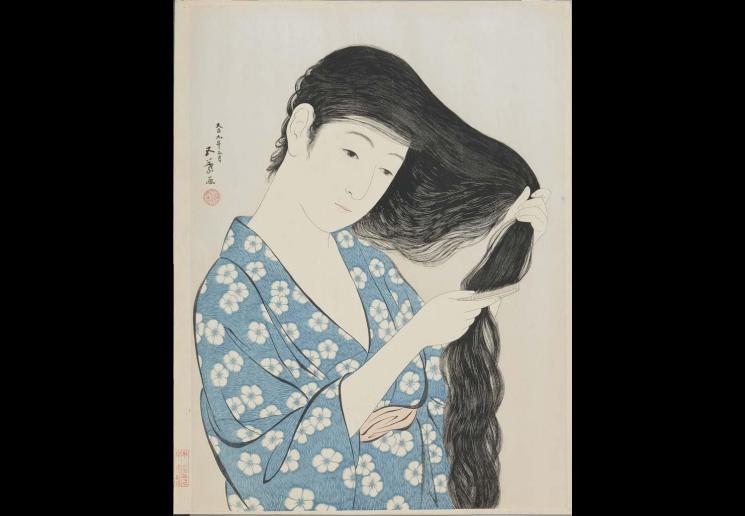IN 1930, the Toledo Museum of Art played a critical role in popularizing early modern Japanese prints in North America by organising the largest exhibition ever devoted to the movement and producing an authoritative and important catalogue to accompany it on its nationwide tour of 10 museums.
Landmark 1930 Exhibition of Japanese Prints
The landmark 1930 show presented 343 prints by 10 leading artists of the shin hanga (new prints) movement. This autumn the museum is revisiting this exhibition of Japanese prints with Fresh Impressions: Early Modern Japanese Prints, reassembling in its entirety that historic exhibition.
The shin-hanga movement began in Japan around 1915 and is noted for combining traditional Japanese woodblock technique with an interest in Western aesthetics and a vivid, modern colour sensibility. The new exhibition underlines the importance of the early 20th-century resurgence of Japanese woodblock printmaking, which has been described as ‘a period of Renaissance’ in the field.
The prints encompass a variety of subject matter, including traditional landscapes, seascapes, rivers and lakes, beautiful women (bijin-ga), actors (yakusha-e), the natural world and wildlife, cities and towns and temples, as well as Western-inspired genre scenes and stilllifes.
Ten Artists in Toledo’s Exhibition
The 10 artists in the exhibition of early modern Japanese prints are Hashiguchi Goyo (1880-1921), Ito Shinsui (1898-1972), Kawase Hasui (1883-1957), Miki Suizan (1887-1957), Natori Shunsen (1886-1960), Oda Kazuma (1882-1956), Ohara Shoson, also known as Ohara Koson (1877-1945), Yamamura Toyonari, also known as Yamamura Koka (1885-1942), Hiroshi Yoshida (1876-1950) and Yoshikawa Kanpo (1894-1979).
All but five of the 343 prints are now in the museum’s collection. Most of these were purchased around the time of the original show and donated to the Museum in 1939 by local businessman and print collector Hubert D. Bennett. (The Museum is borrowing the additional five prints.
These early modern Japanese prints have only rarely been out of storage since the 1930s and as a result are in pristine condition. In addition to the 343 woodblock prints, the exhibition is showing companion objects depicted in the prints – such as kimonos, netsuke and samurai swords and armour, which were not included in the original 1930 show.
Shin Hanga Introduced to the US in 1920s
Shin hanga was introduced to the American public in the 1920s through several smaller exhibitions organised to benefit artists affected by the great Kanto earthquake of 1923. But it was not until the Toledo Museum of Art’s 1930 show, A Special Exhibition of Modern Japanese Prints, co-organised by Toledo curators J. Arthur MacLean (1879-1964) and Dorothy L. Blair (1890–1989), in collaboration with shin hanga artist Yoshida, that the movement’s scope was fully grasped and examined. The original catalogue, which was fully illustrated in black-and-white and featured artist biographies, signatures and seals, became an invaluable resource on the work of modern Japanese printmakers
Blair, the subject of Putney’s essay in the new catalogue published to accompany the exhibition of early modern Japanese prints, was a pioneering authority on Asian art and culture in a field dominated by men. In 1927, she spent a year studying in Japan at Kyoto Imperial University – the first woman and first foreigner accorded that privileged status. She became assistant curator at the Toledo Museum of Art in 1928, after stints at several other noted museums, including the Cleveland Museum of Art and the Art Institute of Chicago.
Early Modern Japanese Prints, from 4 October to 1 January 2014 at the Toledo Museum of Art, 2445 Monroe Street, Toledo, Ohio, www.toledomuseum.org A catalogue accompanies the exhibition.

